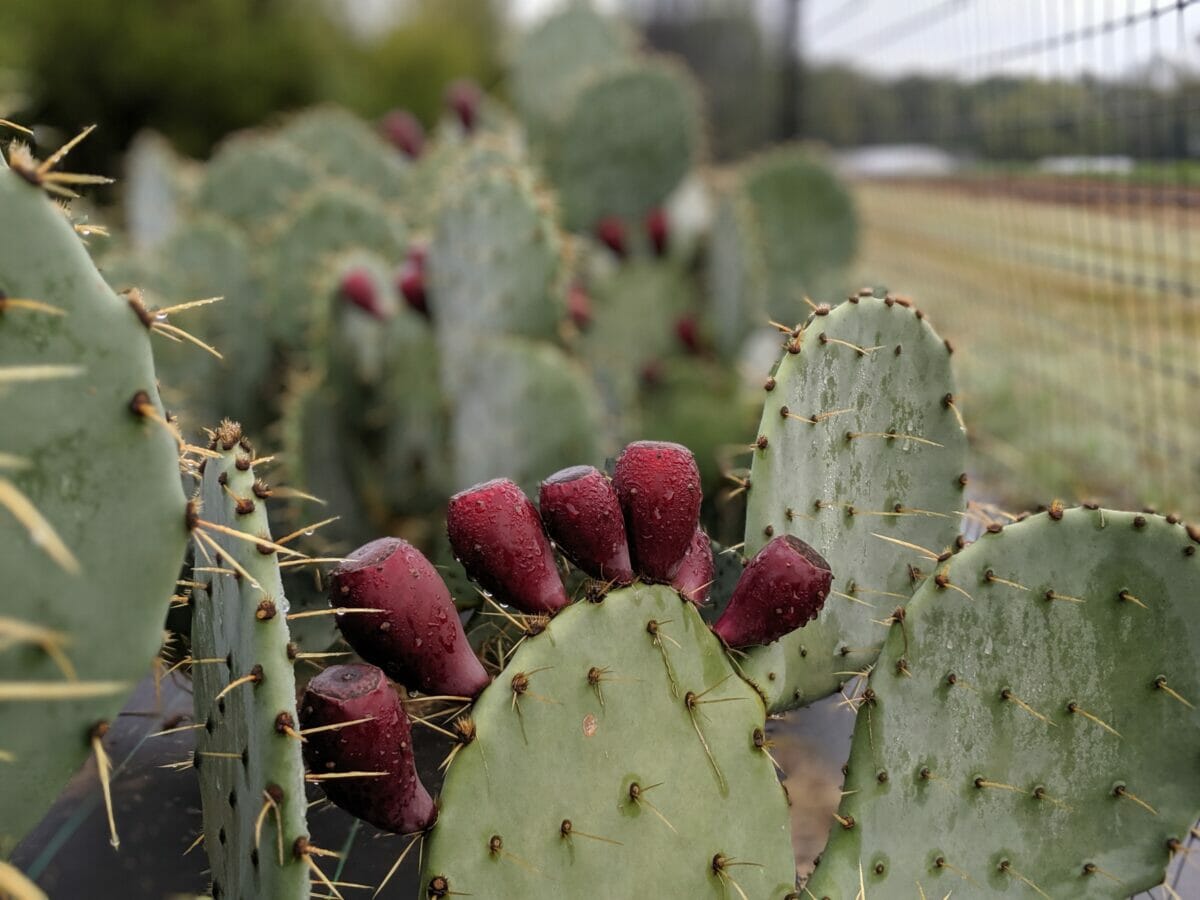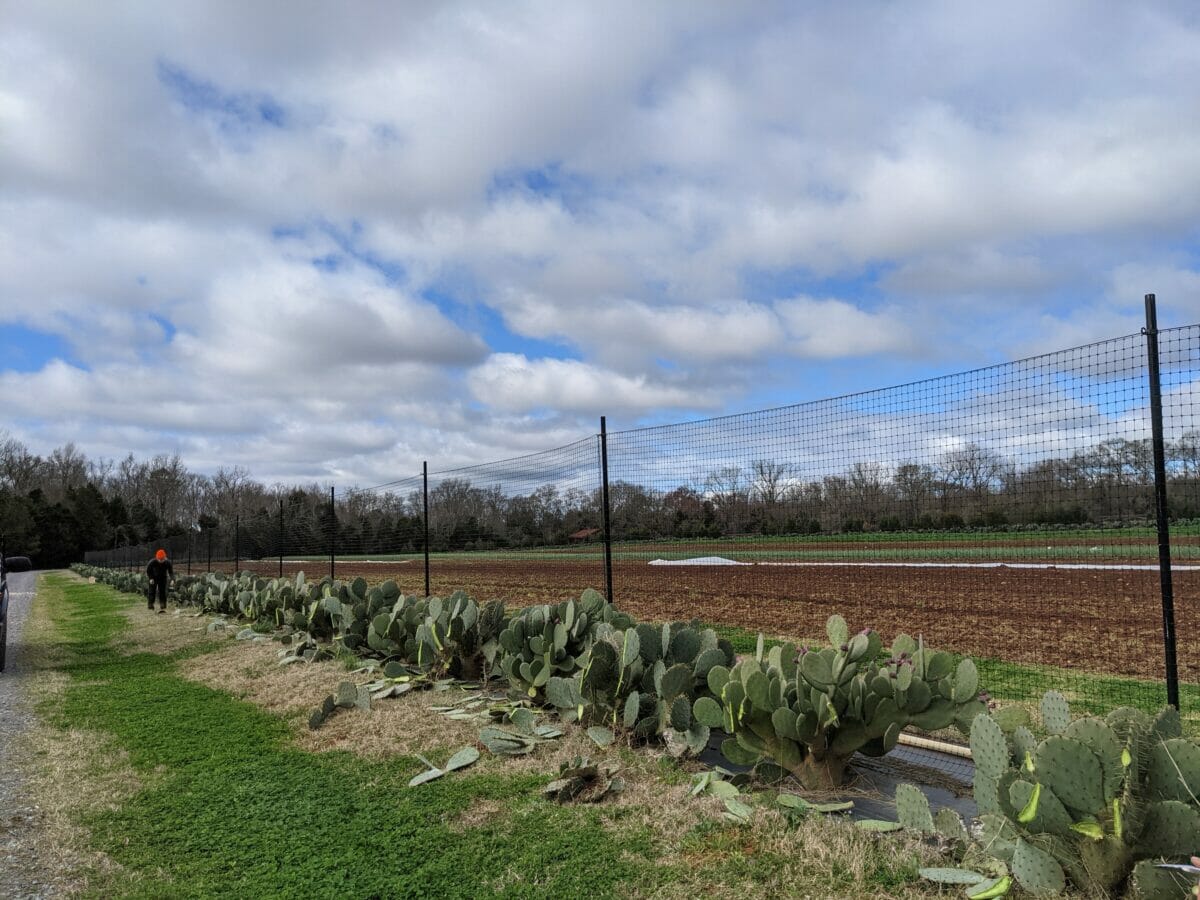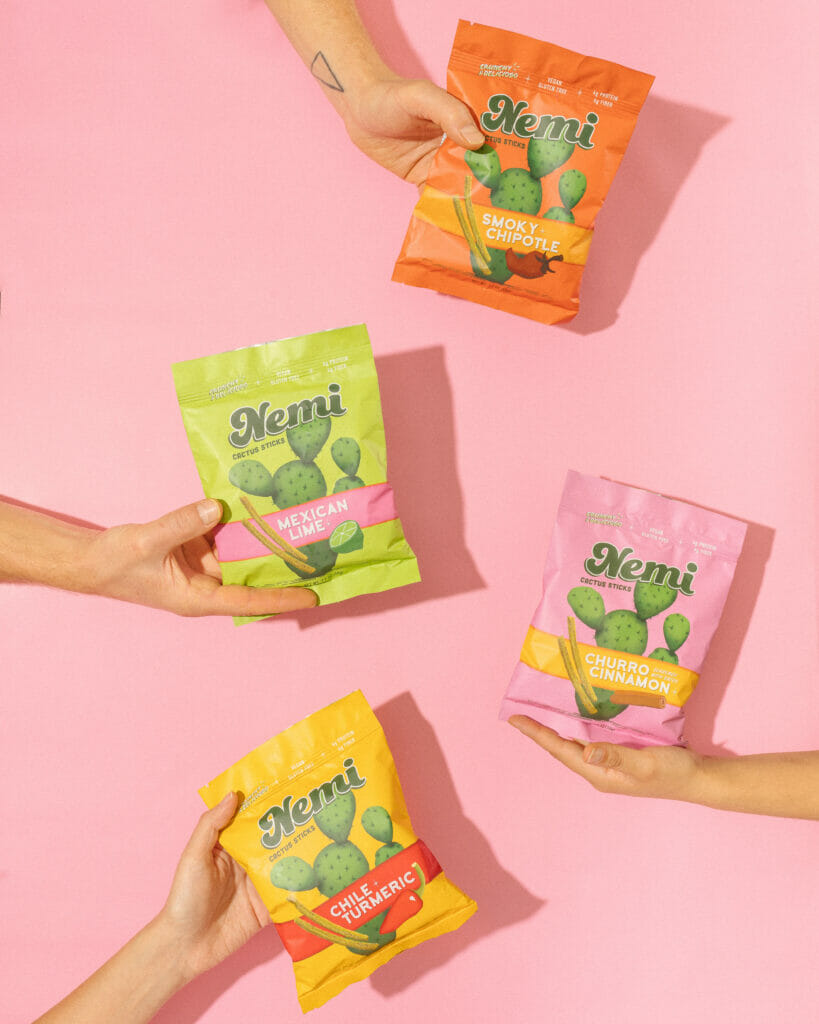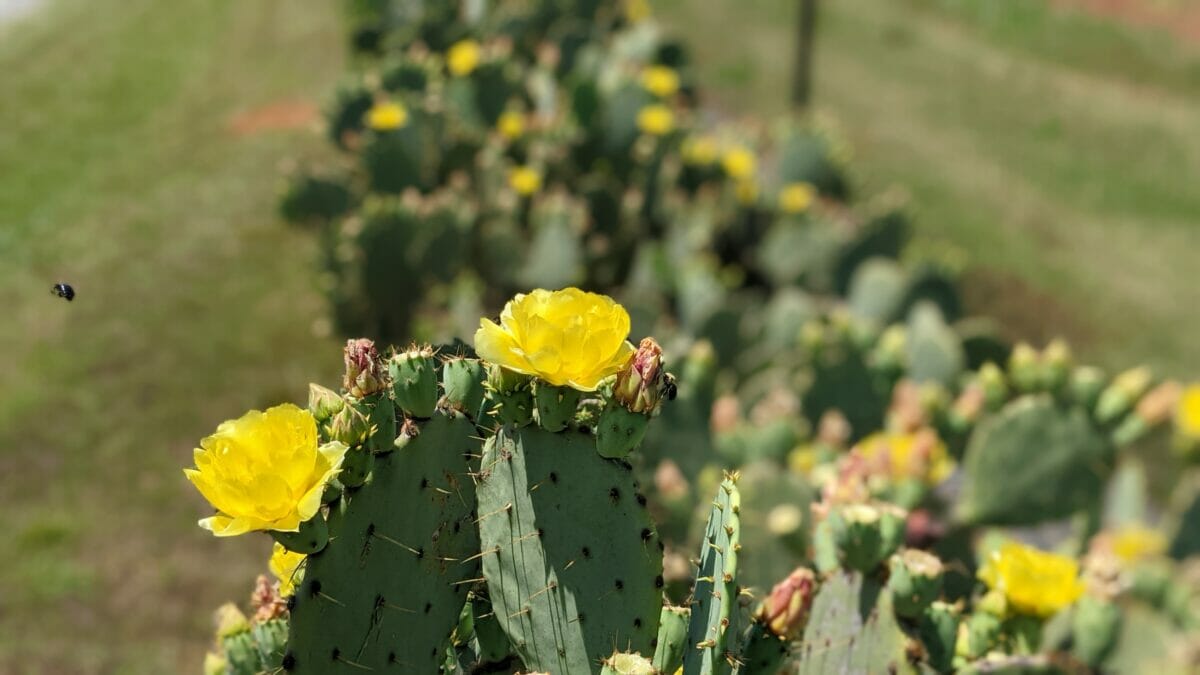Often treated as a weed, prickly pear cactus has a ton of potential. But first, producers need to create a market for the versatile crop in the US.

Shawn Jadrnicek had long loved prickly pear cactus for its tasty fruit, so when he heard the plant could also be used as animal fencing, he was curious. After first creating a pen for his own backyard chickens, the farmer and arborist helped South Carolina’s Wild Hope Farm install a fencing system to keep deer out of its vegetable garden.
The natural barrier was such a success that he brought the design to community gardens in Roanoke, Virginia, where he works as an associate extension agent for Virginia Tech. “I’ve found this fence design tremendously useful as a farmer as it not only reduces the maintenance involved with fencing but it also generates income and will last as long as the cacti,” says Jadrnicek.

A fencing system made of cactus.
In 2021, Wild Hope Farm, which has built up a bit of a following for its prickly pear—a group that includes everyone from local brewers and farmers’ market regulars—sold around $15,000 worth of fruit from the fence. It also sells the cactus pads for food and as potted plants.
“Protection for the vegetable field was the original thought, but [the plants have] served multiple purposes,” says Peanut Belk, head of business operations at Wild Hope Farm. “Not only does it produce flowers which attract pollinators, but the fruit we can harvest and sell to different brewers and cocktail vendors. It’s a crop that we don’t have to touch and yet can make a lot of money off of.”
Often treated as a weed, nopal or prickly pear cactus has great potential as a crop. It grows natively as far north as Connecticut and can be found as far south as Argentina. Super versatile, it’s used in various products, including beauty items such as soaps, shampoos and lipstick, as well as food and beverages. It’s a popular staple food in Mexico, where it’s treated as another vegetable, used in salads, salsas, sauteed with eggs or even to make an alternative French fry. A sustainability superhero, declared by the United Nations as a food of the future, cacti are drought resistant, can improve soil health and, because they reach maturity every six months, can be harvested faster than many other crops.
But nopales are not a mainstream crop—at least not yet. Farmers, researchers and companies across the US and Mexico are working to create a larger market for cacti.
Regina Trillo, founder of Nemi Snacks, and Hector Saldivar, creator of Tia Lupita, grew up eating cacti in Mexico. After moving to the United States, both decided to begin companies centered around the plant. Nemi Snacks makes flavored edible sticks with them, which can easily replace a craving for a bag of chips or pretzels, while Tia Lupita uses them as an alternative ingredient to make grain-free tortillas and tortilla chips to go along with its line of salsas.

Courtesy of Nemi Snacks.
“Cactus is very near and dear to us Mexicans. It’s part of our heritage, culture and diet,” says Saldivar, who started Tia Lupita to combine his love for health and wellness with the Mexican foods and flavors he grew up with in Mexico. “Nopales are represented in the Mexican flag as a key symbol that represents the foundation of Tenochtitlan, now Mexico City. Not only are nopales high in nutritional properties, they are the oldest food in the North American continent.”
Yet, the fruit is often intimidating, especially when sold with glochids, the hair-like spines found on cacti. Wild Hope Farm developed a technique to remove these spikes from the fruits, making them safe to handle with bare hands and increasing sales, but it still had to find people to buy them. “We did have to build up the market and educate people around what the cacti are and how good they are,” says Belk
Gerardo Martínez is focused on that education piece. “The cactus can be the food of the future,” says Martínez, director of intercultural engagement and inclusion at the University of Missouri-Kansas City. Since 2018, he has worked to grow the niche market and educate people about the benefits of nopal at the farmers market, thanks to a grant from Sustainable Agriculture Research and Education (SARE) program.
“It’s got a great number of minerals and nutrients,” says Martínez, who plans to ramp up production in 2023 to regularly bring the cactus to farmers’ markets.
Nopal can be more than just a source of food for people, though. At the University of Nevada, Reno, professor of biochemistry and molecular biology John Cushman found a lot to love about the plant during a soon-to-be-published study. “It’s cold tolerant, there are many uses for its fruit as food, the young pads can also be consumed for fresh vegetables, it can be used to feed animals and supplement up to 40 percent of cattle’s diet and 100 percent of sheep and goats’ diets,” says Cushman. “The idea is we could eventually replace some other crops.”
Cushman and his team are also looking at it as an alternative bioenergy. While that might still be a ways off, we’re starting to see more nopales grown stateside, offering many a taste of home—and for farmers, a taste of what could be their next cash crop.

I grow and sell 7 flavor varietals of prickly pear fruit, and I sell 3 kinds of palora/pitaya/dragonfruit. I lecture about the 26 varieties of nopal cactus pad species with the least spines/glochids. I do chef demos on the differences between 15 different kinds of cacti in kitchen preparation.
A fire swept thru our Santa Paula avocado ranch a few years back, the Opuntia cactus were all that survived. They are fire proof!!
About 65 years back, as a school going child I have tasted CACTUS fruit as the plant grew abundantly in dry lands of low rainfall areas (about 20 inches annually) in Karnataka, INDIA.
It is also learn’t that in some African countries being used as cattle feed.
It is worth researching on various aspects of this plant.
I grew up in Southern Italy on the Amalfi coast. Prickly Pears grew wild all over the countryside , some growing on the sides of mountain others on the roadside and private property. They are known in Italy as fichi d’India( translation figs from India) probably because they were imported from India centuries ago. As a child growing up in Italy under the age of ten , my friend and I would go and collect them with a knife and dropping them into a container We would then go and put them in a container full of water which would… Read more »
You did not mention the nutritional values, vitamin and mineral content of the fruit -vs- pads.
I made 2Qt prickly pear sorbet while in Lincoln County, NM and another 2qt batch Harvested from Wrightsville Beach, NC… Devine! New Mexico’s fruit was naturally sweeter and had a prettier purple.
Prickly pears are great inflammatory!! Great taste lots of goodness comes from this plant, alo vera drink good for stomach;)
Last year my one prickly pear cactus plant produced over 200 pears. We made 10 batches of prickly pear jelly. And canned 3 gallons of juice for later use. This year I gave all my pears away.